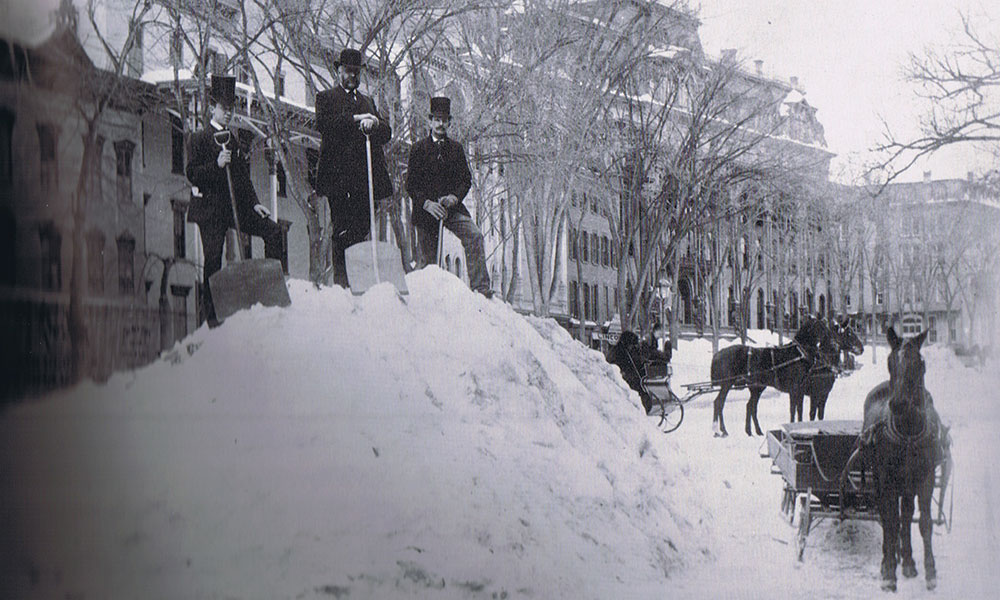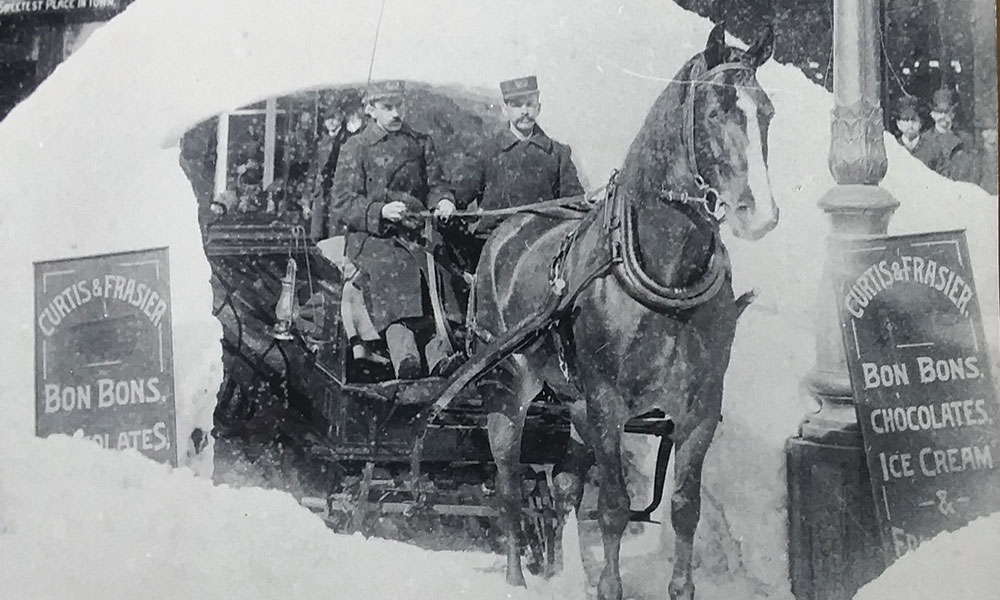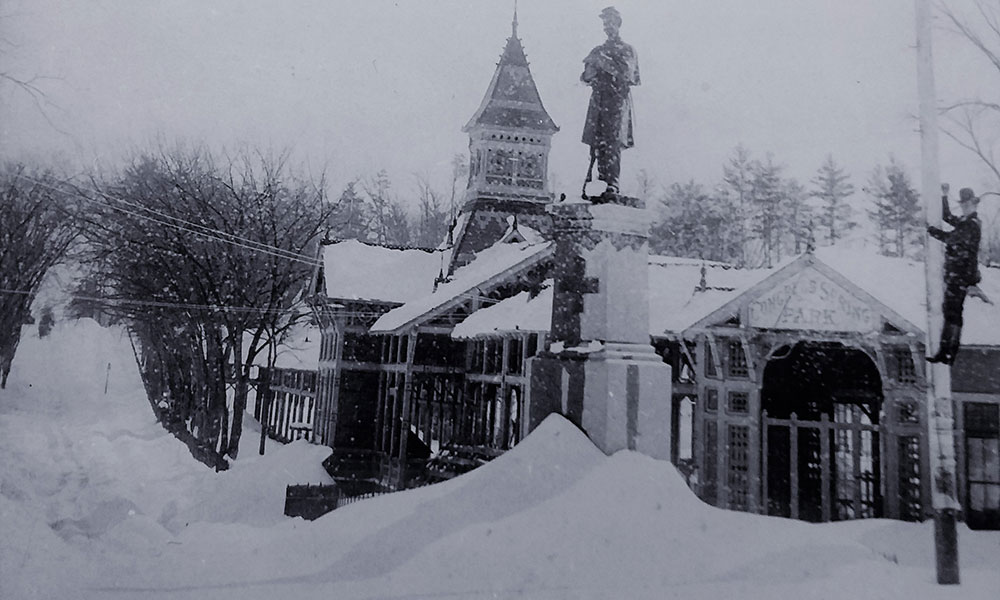I’ve always loved history. I’d better—I’ve been teaching history for three-and-a-half decades at both Saratoga Springs High School and the University at Albany. In fact, a fellow teacher (Charlie Kuenzel) and I joined forces nearly 20 years ago to launch Saratoga Tours, where we’ve given everyone from members of the FBI to veterans groups, and from United Nations delegations to pop superstar Demi Lovato the inside look at Saratoga’s storied history. So, yeah, I know my Saratoga Springs history.
Back in the day, I had no idea that Broadway was originally called Broad Street, that Gideon Putnam was the first person buried in a cemetery he donated to the village or that one of his uncles was one of the founders of Marietta, OH. Every time I’ve researched a new aspect of Saratoga’s history, it has raised and answered additional questions. That’s what makes history so fascinating to me. I don’t think I’m alone in that sentiment.
Saratoga Springs has a wealth of fascinating history, including the Great Blizzard of 1888, which is celebrating its 130th anniversary this March. Whereas this winter has been the coldest in Upstate New York since 1989—and is threatening to break that record—the Blizzard of 1888 went down as the worst in the history of the Northeast, and the record remains unbroken to this day. The monster blizzard crippled everything in its path, and when it was over, left more than 400 people dead and cost the region more than $20 million in property damage (roughly $725 million today).
In 1888, the weather heading into the weekend of March 10 to 11 was typical for mid-March. Saturday the 10th was a mild day, with temperatures in Saratoga Springs reaching the high 30s. The following day, a rainstorm traveled up the coast from Florida, eventually merging with a small snowstorm that had originated in the Great Lakes. The snow began to fall in New York City by late evening on Sunday the 11th, and by noon the following day, more than a foot of snow was already on the ground and winds howled unabated at 40 mph.
Saratoga Springs and the Capital Region began to see heavy snowfall in the early hours of Monday the 12th. Within 24 hours, more than two feet of snow had fallen, and winds ranging from 20 to 50 mph buffeted the area. By the time the storm wound down on Wednesday the 14th, Saratoga Springs was buried in an astonishing 58 inches of snow!

Two of the first casualties of the storm down in the city were the telegraph and telephone wires that connected it to the rest of the world. By Tuesday the 13th, the only telegraphs that left or came into the city were via the transatlantic cables that connected it to London. With communication severely compromised, people had no way of knowing the extent of the storm or what was to come. Another immediate effect of the storm was that the elevated railway system throughout the city ground to a halt after numerous accidents caused by intense winds and ice on the tracks. The railroads ceased to operate from Pennsylvania northward, as their engines were no match for the huge snowdrifts that impeded their progress. People were frightened and disoriented by this relentless beating by Mother Nature. In the 1880s, most people didn’t have any adequate form of refrigeration, and depended on buying fresh food every day. With all businesses at a standstill, and with fierce winds whipping through the boroughs of what was then New York’s most populated city, people were trapped in place and restricted to eating what they had on hand or venturing out into the cold to find food for sale at exorbitant prices.

Conditions were no better in the Capital District. By the afternoon of the 13th, the telegraph lines were all down. George B. Strong reported to The Saratogian that he made 48 repairs to broken Western Union wires between Ballston Spa and Mechanicville before he gave up. Snowdrifts as high as 40 feet were reported in Albany, Troy and Saratoga. Fire departments and police were unable to reach people who needed their assistance.
Albany was shut down as roads became impassable. The paperboys employed by The Saratogian reported that they were walking on the tops of fences to try and stay above the fast accumulating snow. The Civil War Monument in the middle of Broadway in Monument Square was a curious sight, as it was covered with an enormous white crown, the statue’s body almost completely obscured. The back piazza of Congress Hall was buried in 12 feet of snow. A small house on East Harrison Street in Saratoga was completely encircled by snowbanks so high that it made the house invisible from the street. Neither students nor teachers could make their way to schools, which were closed, and the superintendent issued a declaration that, legal or not, schools would remain closed for the duration of the storm.
The most immediate issue was how to clear the streets. Generally, in those days, a team of horses pulled heavy wooden boards to pack down normal levels of snowfall and make streets passable. That was attempted early on in Saratoga by Robert Rice, the caretaker at Judge Henry Hilton’s estate at Woodlawn Park (now the site of Skidmore College). He traversed the grounds and Broadway with four strong horses pulling a lumber sleigh. This was only effective until the snowfall and drifts became too high for the horses to move through. Anyone with a shovel or any object that could be used to move the snow was called upon to do what they could. Many of the working-class residents in the area and Northeast made good money during and after the storm helping to clear streets and railway tracks. In Saratoga, tunnels were dug so that people could get from one side of Broadway to the other.

The Blizzard of 1888 was devastating economically and in the number of lives lost. Some people went out into the snow for supplies and succumbed to the storm. Along the coast, more than 100 seamen went down with ships and boats that were torn apart by the brutal winds.
In the wake of the storm, several changes were called for and implemented throughout the country. Telegraph and telephone lines were buried underground in all urban areas, to keep them from being subjected to another round of Mother Nature’s fury. Within nine years, the city of Boston unveiled the first underground subway, an endeavor that was replicated in New York City by 1904. Railway engineers developed new attachments that improved snow removal from buried tracks. Electric cars, already on the streets of Richmond, VA, were found to be much more effective in transporting people through snow. To that end, by the early 20th century, horse-drawn carriages had become increasingly rare.
The Blizzard of 1888 was a record-setter in Saratoga Springs for the amount of snow fallen in a short period of time and the size of the snowdrifts. For years, people compared any sizeable snowstorm with the Blizzard of ’88.
Time will tell if this winter’s deep freeze will be added to the history books—and Saratoga lore.


